Student Blog
International

When you need supports: Ask for Help! ⟩
February 11, 2019, by Goeun
International Life Hacks
Everyone needs support when having a hard time. Especially as international students, it could be harder to find supports since we are far away from home. Before I came here, one concern that I had was where and how to get support as I don’t know anyone here and it was my first time coming to the US. I was worried about my English and I wasn’t confident whether I could do it well or not. However, since I started the Post-Professional Master’s program in the USC Chan Division of Occupational Science and Occupational Therapy, I’ve been supported by so many people and groups in school which I really appreciate.
Here are some resources where you can get help and supports when you need as an international student in the USC Chan Division of Occupational Science and Occupational Therapy.
1. Global Initiatives
When I think of supports as an international student, the first thing that came up in my mind is Global Initiatives. As its title represents, the Global Initiatives team supports international students in our Division to adapt to a new country as well as to help us academically. They’ve held Global Corner which we can join and have fun. Also, they have Academic Peer Mentors, International Student Mentorship Program and Study Hall which supports our academics and hear from previous students as well. In terms of Study Hall, Julianne, who is an Entry-Level Master’s student, help us with English when we’re having a hard time doing assignments or studying exams. I think it really helps us and makes us feel that we are being cared for.
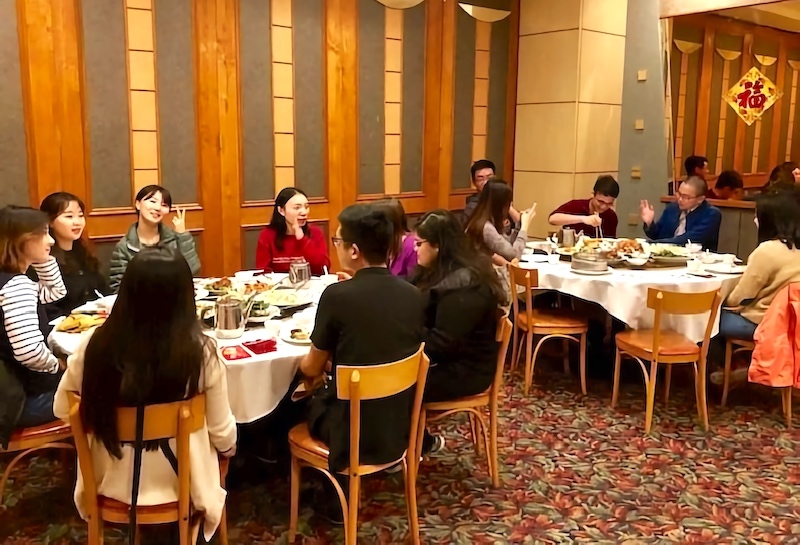
We had dinner to celebrate Lunar New Year altogether.
2. Faculty members
The Chan Division of Occupational Science and Occupational Therapy has more than a hundred faculty members. You’ll not have a chance to meet all of them, but during your program, you can get a lot of support from the faculty members. They help us not only academically, but also with other things. Dr. Blanche and Dr. Ochi, who are the program directors of the Post-Professional Master’s program, have been supporting in so many ways. We were invited to Dr. Blanche’s house for BBQ party in the first month of the program and Dr. Blanche and Dr. Ochi have been asking how have we been doing all the time. Also, Dr. Cermak, who was a professor from our program in the Fall semester, was supportive not only during the class but during the whole semester. I was surprised by how supportive they are and their willingness to help us. Also, when you have interests in some specific part, I’m sure that you can find experts and ask for advice in the Division.
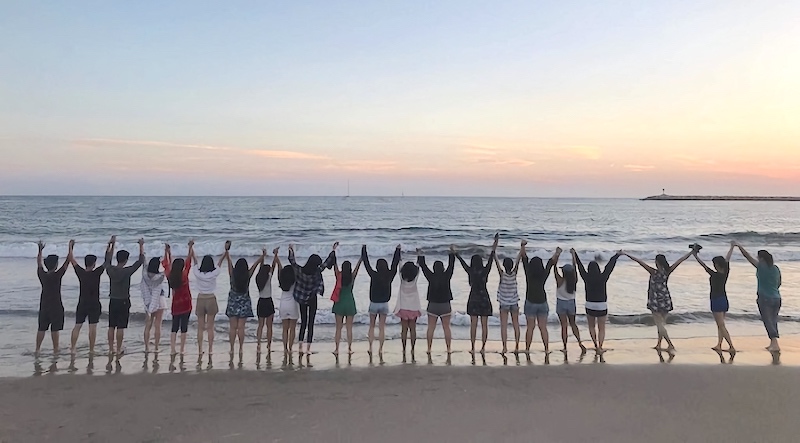
This is a picture from last semester when we went to Dr. Blanche’s house for BBQ Party.
3. Classmates
When you’re struggling with something, you may think that you’re the only person who has the problem. However, since all of your classmates from the Post-Professional Master’s program are mostly international students, they could have the same or similar problems that you have or you have been through. I was really nervous before I start the program, but once I met them in the orientation day, I could feel much better as all of my classmates were so kind and supportive. We had some group works in the Fall semester, and all of us were cooperative, helping each other. We also meet sometimes, hang out together. You can also learn so many things from different cultures to their clinical experiences as an occupational therapist in their countries. It has been really nice having them as my classmates and I’m sure if you come and start the program, your classmates will be too.

We went to Koreatown for dinner together.
4. Office of International Services (OIS)
OIS is one other support that you’ll need during your study in the U.S. Some things that you need to complete when you first come such as passport verification is done by OIS. Also, while studying, when you travel out of the States, you need OIS for a travel signature. When you’re about to graduate, you’ll need help to apply for OPT visa. Like I mentioned, OIS help us process our visa and stuff, and they have some events too like International Coffee Hour, Movie Night, and Intellectual Writing Session. You can also find some useful information on the website from broadly studying abroad to living in LA specifically.
I really appreciate their help and supports. This is one reason why I chose USC and I think it would have been more difficult studying and living in another country. Lastly, I’m also thankful for the Student Ambassadors and Admission Team since they’ve been supporting me adjust to this position.
⋯

Presentation in South Korea ⟩
January 14, 2019, by Goeun
Getting Involved International
The new year has begun so as the new semester! Winter break has gone fast. During the winter break, I was back in my home country, Korea. I had a wonderful time back in there and I’d like to share some of my memories.
I was in Korea for three weeks and I visited a lot of places. I’m originally from Gwangju which is in the southern part of Korea. However, I went to a university in Daejeon, the middle part, so I went there to visit a professor and give a presentation about the Post-Professional Master’s Program for students at the university. Also, I worked in Jeonju before I came here, so I went there to visit the hospital where I worked and see my previous co-workers. I also went to Seoul and Daegu to visit my friends and went to Jeju Island with my family.
I went so many places and I’d love to introduce every places, but this time, I’ll tell you more about the presentation that I did. I planned for this while I was in here during the Fall semester. I was contacting with the professor from the university that I went, and got a chance to present about the Post-Professional Master’s Program in the USC Chan Division of Occupational Therapy and Occupational Science, which I’m currently studying as well as Pre-Master’s Program from the USC International Academy which I did before the Post-Professional Master’s Program and SOTI Program from the Global Initiatives. It was a great opportunity for me to present about the program in my country as a student ambassador in the USC Chan Division and a senior from the university in Korea.
In the presentation, there were about 50 students mostly freshmen and sophomore who are interested in studying abroad. Like I mentioned earlier, I presented about the Post-Professional Master’s Program, Premaster’s Program, and SOTI Program. Also, I told them my experiences what I prepared to study in here from learning English to applying and adjusting to a new country.
It was so great to meet the students, introduce the programs, and tell my story. Lastly, since I’m the first student from my university who study abroad, I hope more students would come later as Post-Professional Master’s students or a SOTI program participants.
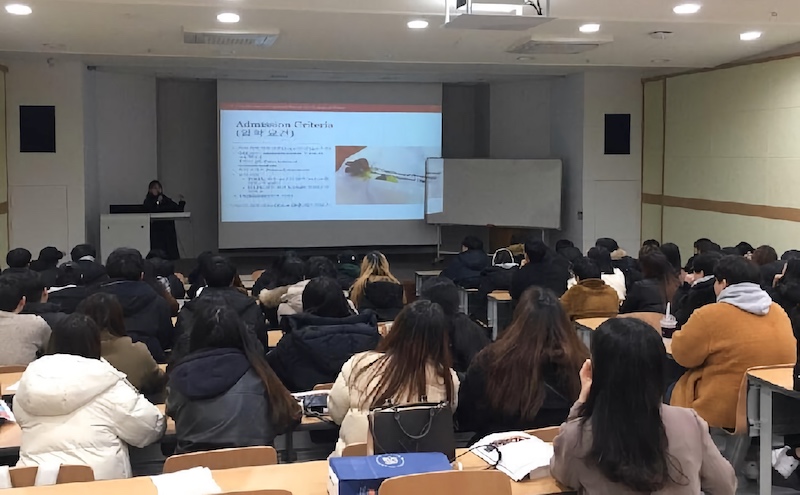
A picture of presentation about the Post-Professional Master’s Program
⋯

Being in Graduate School as an International Student ⟩
November 1, 2018, by Goeun
International
Time flies and it’s already halfway through the first semester. 10 weeks has been already passed and I’ll introduce what I did by month.
August
This month was the time that I finally set up everything for graduate school as an international student and started my new journey in the Post-Professional Master’s Program. I had orientation from USC and our division, registered courses, had PPV (passport verification), got my student ID, etc.
Fall semester started on August 20, then we had the white coat ceremony on the same week, which let us feel that we really started. At the end of this month, Dr. Blanche, our program director and professor of clinical occupational therapy, invited all post-professional students, Dr. Park, Dr. Cermak, and Dr. Gray to her house, which is near a beautiful beach and we had BBQ party and had a wonderful time.
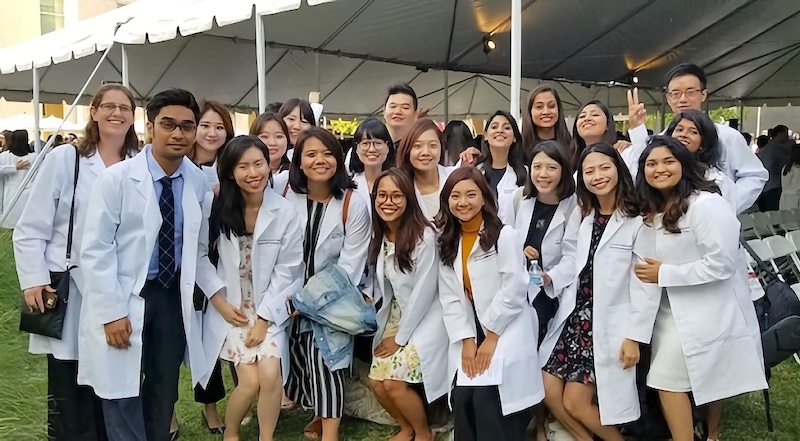
The White Coat Ceremony made us feel that we really started the Master’s program

The Post-Professional students went to Dr. Blanche’s house and had a BBQ party together
September
While August was kind of like a warm-up month, September was the month that we really started academics, getting used to all the readings, exams, and assignments. Because English is not my first language, it was tough for me to understand and keep up with the lectures at the beginning, but thanks to Global Initiatives, we have a study hall that provides academic support to international students. More than that, we had dinner with Dr. Cermak at a Chinese restaurant which was awesome and fun.
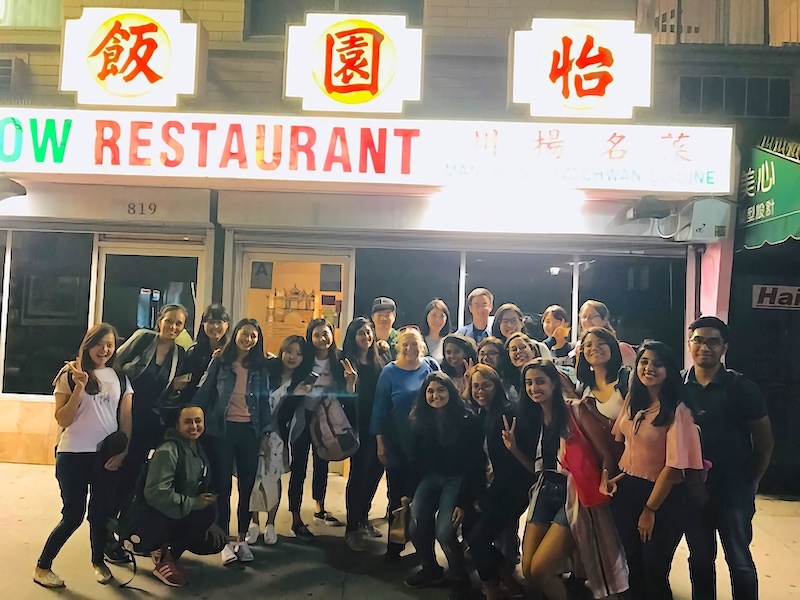
We took a picture when we had dinner with Dr. Cermak in the Chinese restaurant
October
Since we’re getting more into the semester, it was time to think about the next semester. We’re taking 5 required courses and 1 elective course. However, unlike this semester, we’ll mostly take elective courses in the Spring semester, so we had to think about what to take. Also, we had a wonderful dinner with Dr. Cermak in an Indian restaurant, this time with Dr. Blanche, Dr. Ochi, and Dr. Vigen. In addition, on October 25-28, OTAC was held in Pasadena. It was a great opportunity to attend the conference as an OT student and learn more about it.

We took a picture when we had dinner with Dr. Cermak at an Indian restaurant after finishing one of our big projects
This was my journey as a post-professional student so far. It was not easy but so great that I could learn and have those experiences. I’m excited about the rest of this semester as well as the next semester and hope everything goes well!
⋯

Pre-Master’s Program for International Students ⟩
October 29, 2018, by Goeun
Admissions International Life Hacks
Many international students think that they should be prepared all before they apply for a Master’s Program and before they come to study abroad. However, there is one other way which I did and I want to introduce to you. I learned English in the USC International Academy before I start my Post-Professional Master’s program in our division. The program was called Pre-Master’s Program and I’ll tell you more detail.
- How to apply
The process of application is basically the same: we need a personal statement, letter of recommendation, GPA, but one major difference is that we don’t need GRE score yet to get into Pre-Master’s Program. Actually, this program helps us prepare GRE and meet the score. Also, there is no specific deadline but be sure to think about the start date of your Master’s Program. - What to learn
Once you apply for the program and get admitted, that means you’re conditionally accepted to Master’s Program! In the Pre-Master’s Program, you’ll learn three core courses which are writing & grammar, reading & vocabulary, and communication skills, and two elective courses depending on your choice (e.g., GRE, public speaking, job-ready, American cultures, academic integrity, etc.). - How to transfer to Master’s Program
To transfer to Master’s Program, you need to get an average B score in core courses and C on your elective courses. Also, depending on your Master’s Program, you need to meet your GRE score during the Pre-Master’s Program.
For me, it was a great experience to not only learn English and different teaching styles from my country but also meet many students from different countries and different majors. If you want to apply to school but worried about your English proficiency, think about this way!
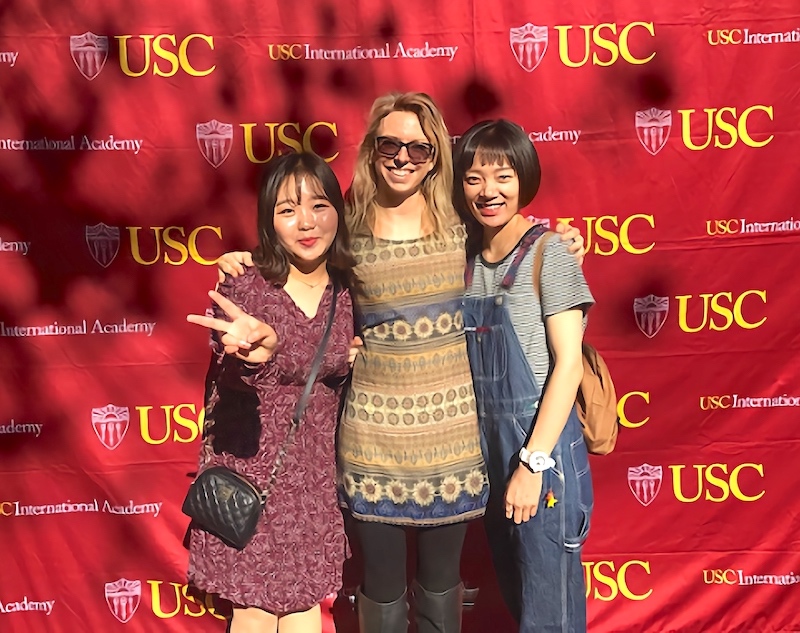
Ending ceremony is held each semester to celebrate students who graduate from USC International Academy.
⋯
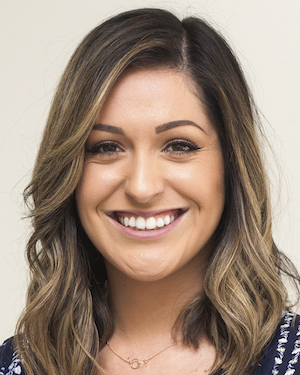
Specialization in Occupational Therapy ⟩
October 11, 2018, by Melissa
International Life Hacks
Hey everyone! I’m currently in the process of picking electives for the upcoming spring semester and I thought this would be a great time for me to talk about the opportunity to “specialize” in OT! Although the program prepares us to be generalists — meaning we graduate with knowledge in many areas — we have the opportunity to take several elective courses during the spring semester of our second year! This is where the “specializing” comes in, as you can take courses that fit your specific interests and help you expand your knowledge in a specific area. For example, a student that is interested in pursuing a career in hand therapy can take the Advanced Practice in Hand Therapy and Physical Agent Modalities and Hand Rehabilitation electives. A student interested in pediatrics may want to take the Sensory Integration Theory and Intervention courses, which is a particularly unique opportunity since Sensory Integration originated at USC. Another example is taking an OT In Acute Care course or the Enhancing Motor Control for Occupation course if you’re interested in working in a physical rehabilitation setting. These are just a few of the MANY options available to us.
In addition to taking courses within the division, students can take classes at other schools at USC, such as courses in business, education, and public policy. It’s a great opportunity to expand our knowledge of other fields, and become increasingly well-rounded clinicians. Lastly, I would like to discuss yet another option we have during the spring semester, which is an opportunity to take an independent study course with a faculty member within the division. This option allows you to specialize even further by working on a study that fits your interests. The moral of the story is that the possibilities are endless!
One thing I would like to add is that it’s okay if you don’t know what area you want to go into. You can take electives in several areas, and use the spring semester as a time to explore different options in order to see what feels like the best fit. Our program does a great job of exposing us to many different areas of practice and preparing us to be great clinicians, so don’t stress about making the decision to “specialize” if you’re not ready. As always, feel free to reach out with any questions you may have.
⋯





